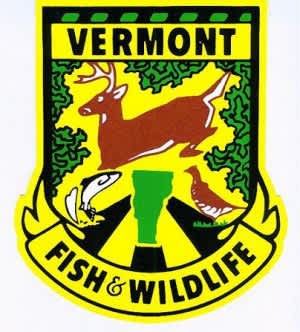Special Snow Goose Harvest Opportunity in Vermont
OutdoorHub 01.31.13

Since 2009 hunters have had the opportunity to pursue snow geese during the spring as a result of a special management action referred to as a “Conservation Order” allowed by the U.S. Fish and Wildlife Service and adopted by the Vermont Fish and Wildlife Board.
The measure was adopted at the recommendation of federal and state wildlife scientists in response to concerns about a growing number of snow geese across North America. Eight states in the Atlantic Flyway (Delaware, Maryland, New Jersey, New York, North Carolina, Pennsylvania, Virginia, and Vermont) will hold a Spring Snow Goose Conservation Order in 2013.
The Vermont 2013 Spring Snow Goose Conservation Order will occur statewide from March 11 through April 26. The daily bag limit is 15 snow geese, and there is no possession limit. Waterfowl hunting regulations in effect last fall will apply during the 2013 Spring Snow Goose Conservation Order with the exception that unplugged shotguns and electronic calls may be used, and shooting hours will be extended until ½ hour after sunset.
A 2013 Spring Snow Goose Harvest Permit is required and is available at no charge on the Vermont Fish & Wildlife Department’s website (vtfishandwildlife.com). Hunters may also call the Essex Junction Office (802-878-1564) to request a permit.
In addition to this permit, hunters will need a 2013 Vermont hunting license (residents $22, nonresidents $50), 2013 Harvest Information Program (HIP) certification, a 2012 federal migratory hunting stamp ($15), and a 2013 Vermont migratory waterfowl stamp ($7.50). Hunters can register with the Harvest Information Program by going to the department website or calling toll free 1-877-306-7091 during normal business hours.
The populations of snow geese, blue geese and Ross’s geese in North America, collectively referred to as “light geese,” have grown to record levels over the past three decades.
According to the U. S. Fish and Wildlife Service, the overabundance of light geese, which nest in far northern regions of North America, is harming their fragile arctic breeding habitat. The damage to the habitat is, in turn, harming the health of the light geese and other bird species that depend on the tundra habitat. Returning the light goose population to sustainable levels is necessary to protect this delicate habitat and every species dependent on it.
Greater snow geese make up a large share of the light goose population in the Atlantic Flyway.
“The population of greater snow geese has grown from approximately 50,000 birds in the mid-1960s to 1 million today,” said David Sausville, Vermont’s waterfowl project biologist. “This increase has resulted in damage to agricultural crops and marsh vegetation in staging and wintering areas from Quebec to North Carolina. The Atlantic Flyway has established a goal of 500,000 greater snow geese to bring populations in balance with their habitat and reduce crop depredation.”
Hunters who obtain a permit will be required to complete an online survey after April 26 and prior to May 16, 2013, whether they hunted or not. Hunters without access to the internet may obtain a copy of the survey by calling 802-878-1564.
The Spring Snow Goose hunt occurs annually from March 11 until the Friday before Youth Turkey Weekend.
During spring migration, snow geese typically move through the Champlain Valley in late March and early April. They usually pass through Vermont fairly quickly in route to their spring staging areas along the St. Lawrence River Valley. Here they remain for about a month before moving on to their nesting areas in the Eastern Canadian Arctic. About 100 snow geese are taken by Vermont hunters during the spring seasons.

